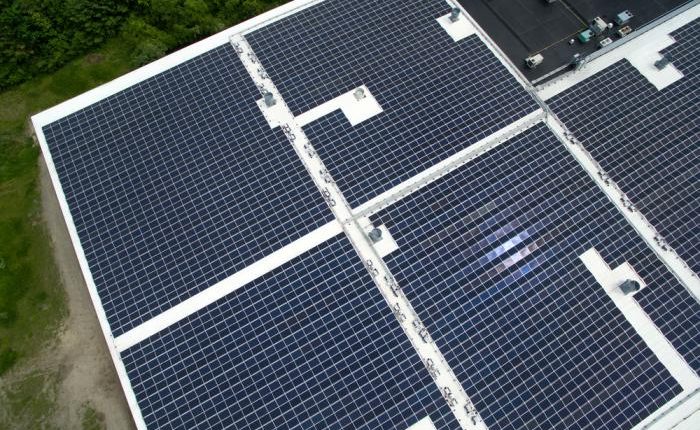Business Photo voltaic Panel Dismantling: What You Ought to Know
There are a number of important features to consider when choosing a solar panel for your business. One of the most important is understanding the rate of deterioration of the solar panels you review, the comparison between manufacturers, and the potential impact of solar panel deterioration on business results.
But what exactly do the terms “deterioration” and “rate of deterioration” mean – and how much should the rate of deterioration of your commercial solar modules play a role in your decisions? Let's take a quick look.
What is solar panel degradation and what does "rate of degradation" mean?
It may sound ominous, but "deterioration" is just one industry term that describes the decline in performance that all solar panels experience over time. Had he been here today, Ben Franklin would no doubt have added solar panel deterioration to his notoriously short list of the certainties of life.
So, if you are wondering, "Do solar panels degrade over time?" The short answer is "yes". All solar panels are deteriorating. But they are not all taken down at the same time rating– this is important and requires a closer look. In their first year of operation, panels are usually degraded by less than 1% to 3% in the short term. After that, according to a recent study, the performance of solar modules drops by an average of 0.8% to 0.9% every year.
For example, if a panel's short-term deterioration was 2% in the first year, it would operate at 98% efficiency from the second year onwards. From this point on, assuming that it would then deteriorate by 0.8% per year, it would still work with an efficiency of 78.8% in year 25 (see table).
Now you are probably wondering, "How long do solar panels last, anyway?" That's a good question. Extensive tests carried out by commercial solar module manufacturers suggest that the lifespan of solar modules is between 25 and 40 years, depending on the manufacturer. This does not mean that panels will stop working or generate electricity after this time. It just means that their energy production has decreased to what manufacturers refer to as the "useful life" of a panel.
What impact can commercial solar degradation rates have on your business?
We saw one average Solar panel would deteriorate. But what if you are considering a panel that is deteriorating faster, possibly at a rate of 1.0% per year – or more slowly, for example, at a rate of only 0.25% per year? Is that a big difference?
It definitely can be. The fact is that these sixth or seventeenth percentage points of the degradation rate can result in thousands of kilowatt hours of energy loss per year, depending on the number of modules and the duration of power generation. This means that you could end up spending money drawing power from the grid rather than your installed solar panels. For a large commercial installation, this can mean hundreds of thousands of dollars over the life of the system.
For this reason, it is important to consider whether it makes more financial sense in the long term to save upfront on lower quality panels with higher degradation rates or invest in higher quality (and possibly more expensive) panels that deteriorate more slowly. You should always compare the potential cost savings beforehand when evaluating your options.
The difference in the rate of degradation can add up to a significant amount of money over the next 10, 15, or 25 years.
Causes of Solar Panel Deterioration – And How To Keep The Rate As Low As Possible
In general, solar panels are extremely durable and designed to withstand strong winds and heavy snow loads. However, keep an eye on your commercial solar panel system – and make sure it does well maintained– could lead to a lower degradation rate per year and more production in the long term. Here's a look at what causes solar panel degradation and some tips to keep the rate down:
- The more quality the materials in your panels, the more extreme the weather conditions They are exposed to degradation all the faster (e.g. strong winds and high humidity, scorching roof temperatures, annual freezing / thawing cycles). If your panels are going to be installed in an environment where weather could play a role, ask about ways they can be protected from the elements.
- Check your panels annually for physical damage such as trees or bushes blowing in the wind causing scratches. The more surface scratches there are on your panels, the faster they will break down. The placement Your solar panels – such as floor, roof or Carport Installations – can also affect how quickly your panels degrade.
- Though not always necessary Clean your panels can also play an important role in making sure they don't worsen faster than expected. Monitor changes in the performance of your solar modules before and after cleaning as well as over different time intervals. Take notes and evaluate what works. You may find that the cleaning costs are actually higher than the costs associated with a lower rate of degradation.
Key Findings About Commercial Solar Degradation Rates
When comparing commercial solar panels for your business, here are some key points to degrade:
- Understand the rate of degradation of the panels you are considering, as well as the impact of this reduction in energy output on power loss – and the cost in dollars and cents – over the life of the panels.
- Assess the financial impact of selecting a panel with a lower upfront cost but a higher rate of deterioration compared to a panel with a higher upfront cost but a lower rate of deterioration. The vendors you are considering should be able to provide you with a cost savings analysis over a 10, 15, and 25 year period.
- Find out what steps to take Provider recommends In terms of placement, ongoing inspections, cleaning and maintenance to keep the rate of deterioration of your solar panel as low as possible.
It’It is certain that all solar panels will deteriorate over time. Do some thorough research beforehand– –and ask the right kinds of questions– –can help you make the best commercial solar panel selection for your business in the long term.
related posts
How many solar panels are required to power a company?
Everything You Need To Know About Commercial Solar Battery Storage In 5 Minutes Or Less
10 easy ways to reduce energy costs for businesses

